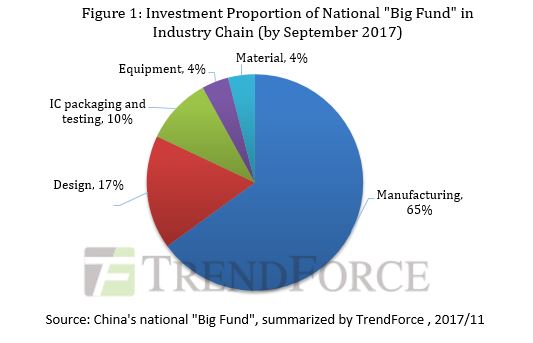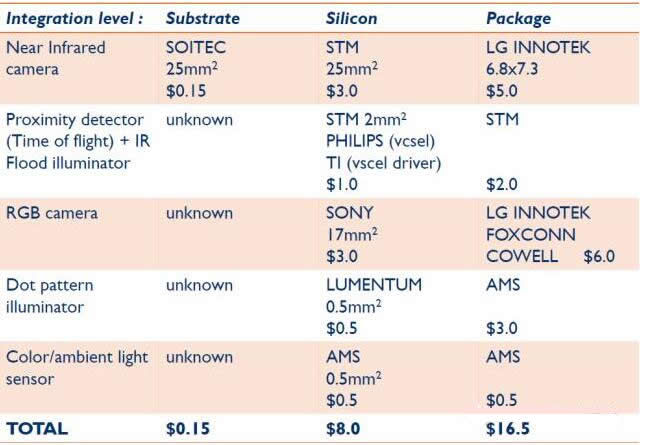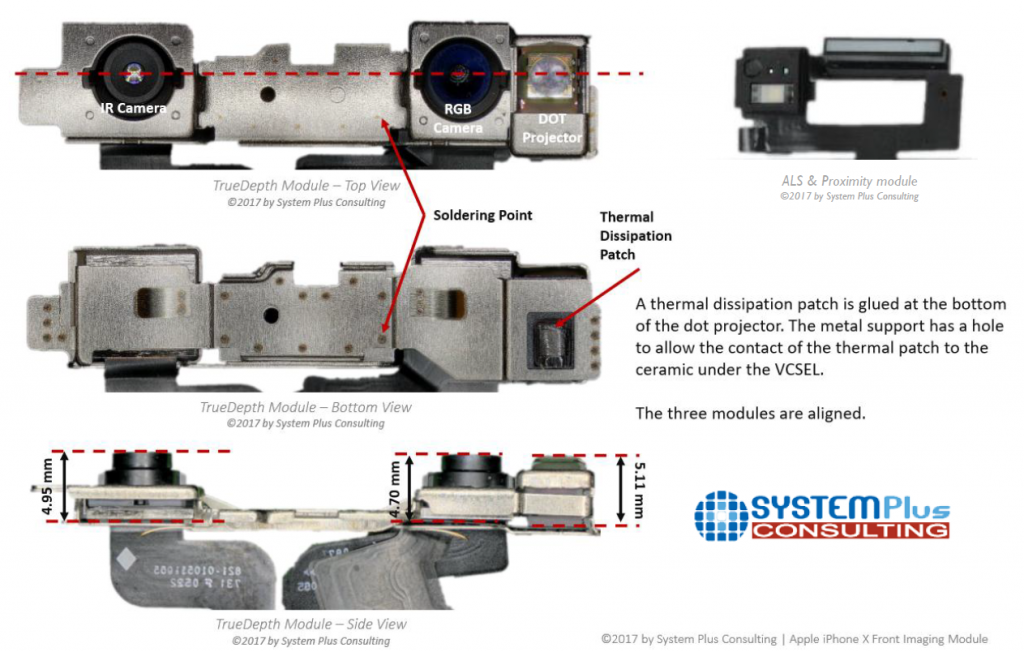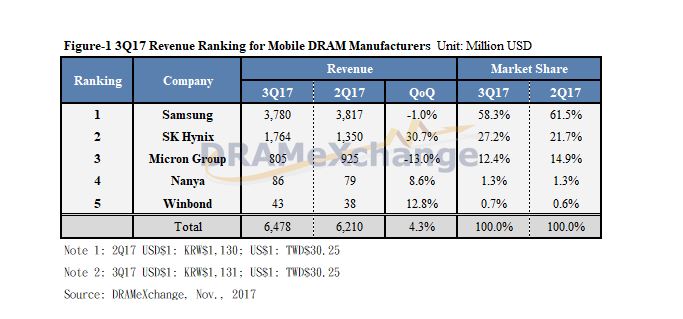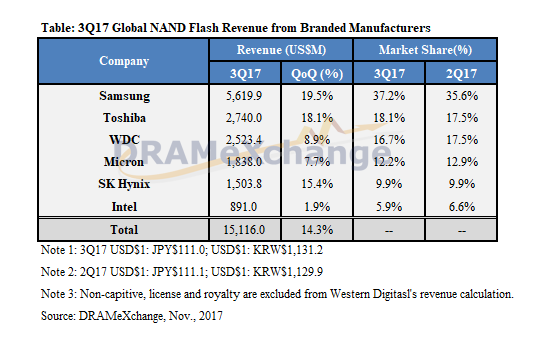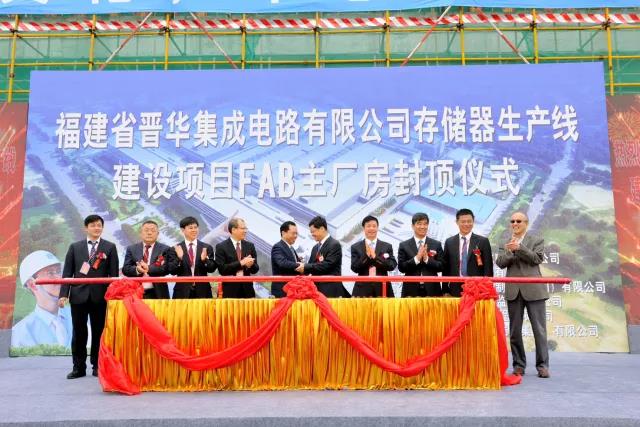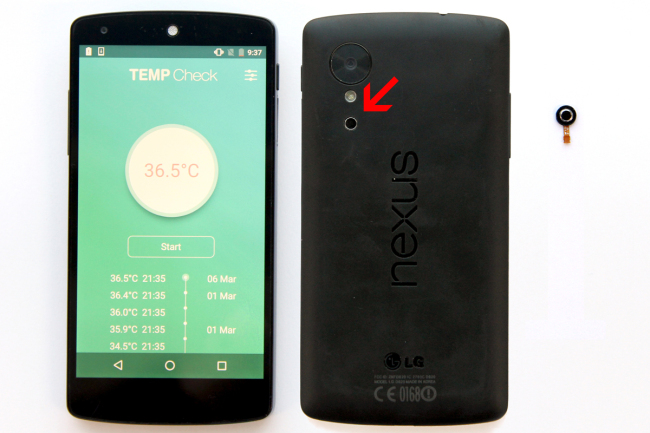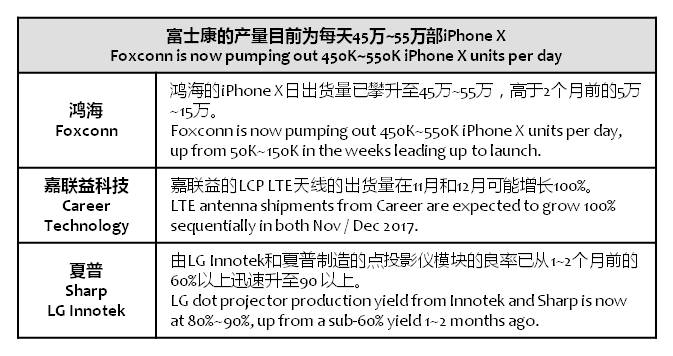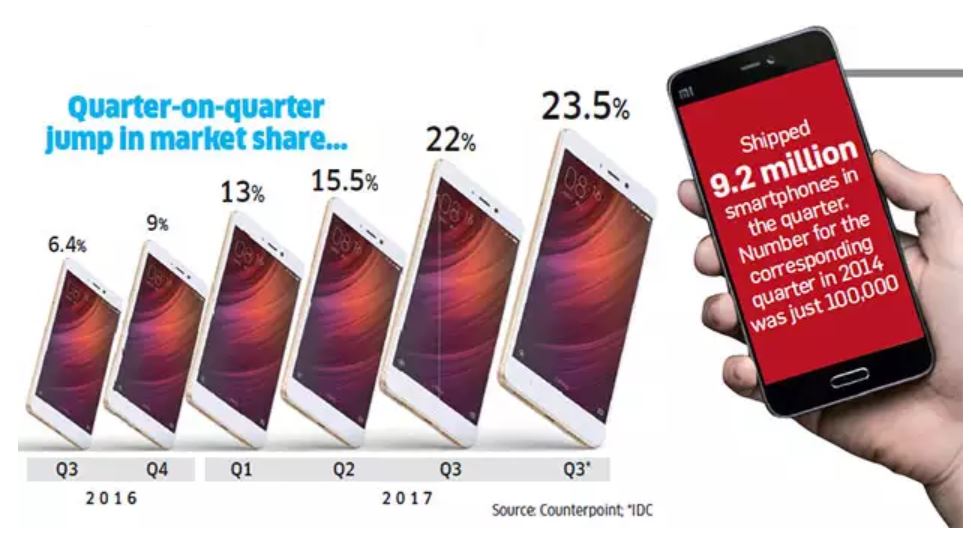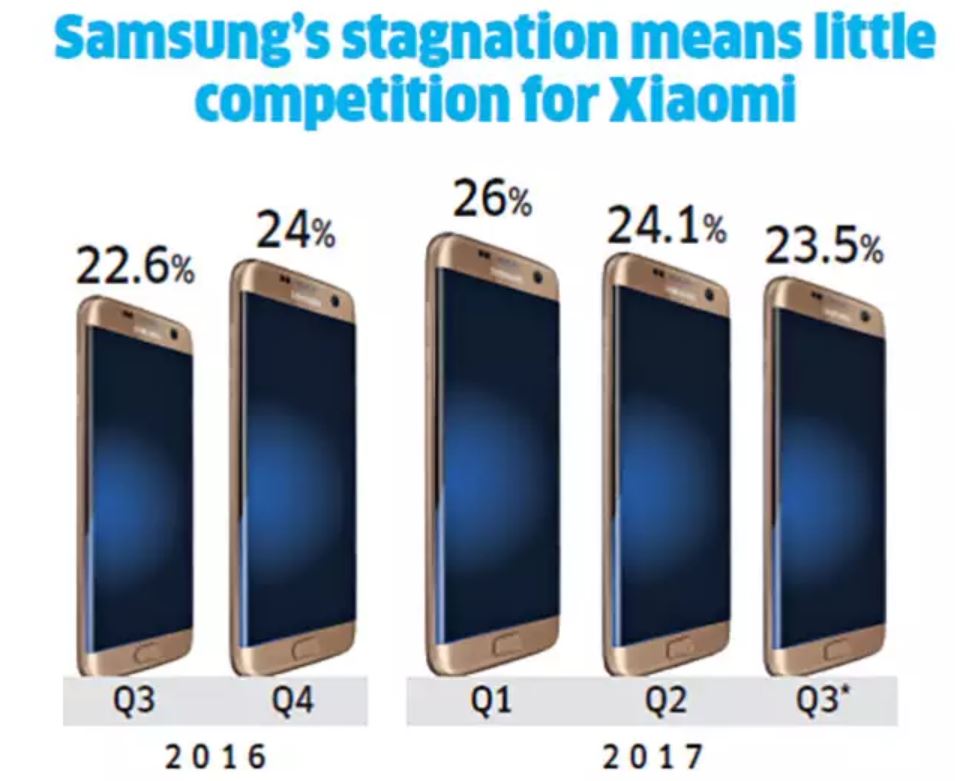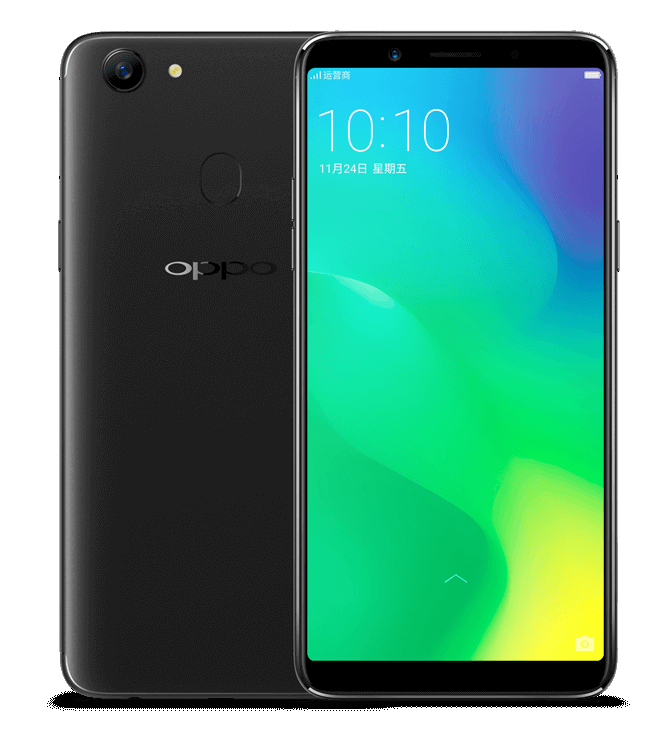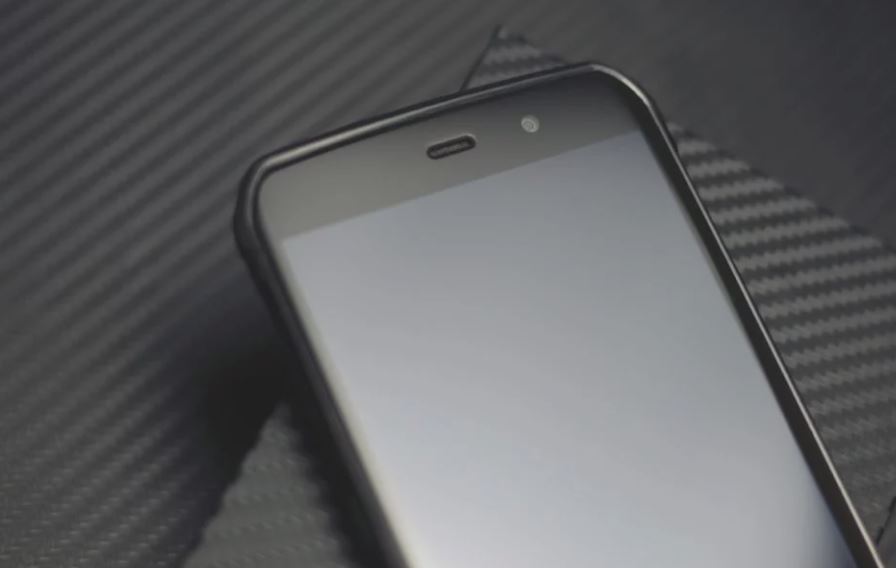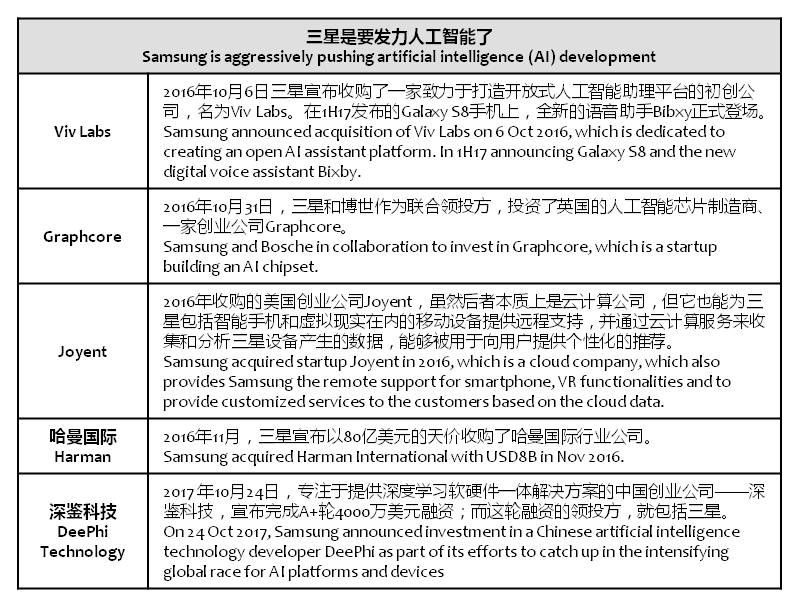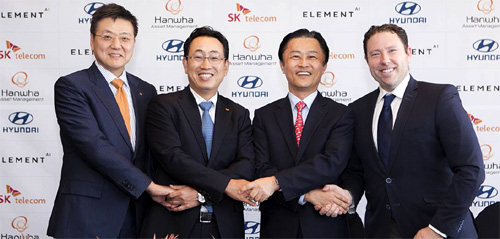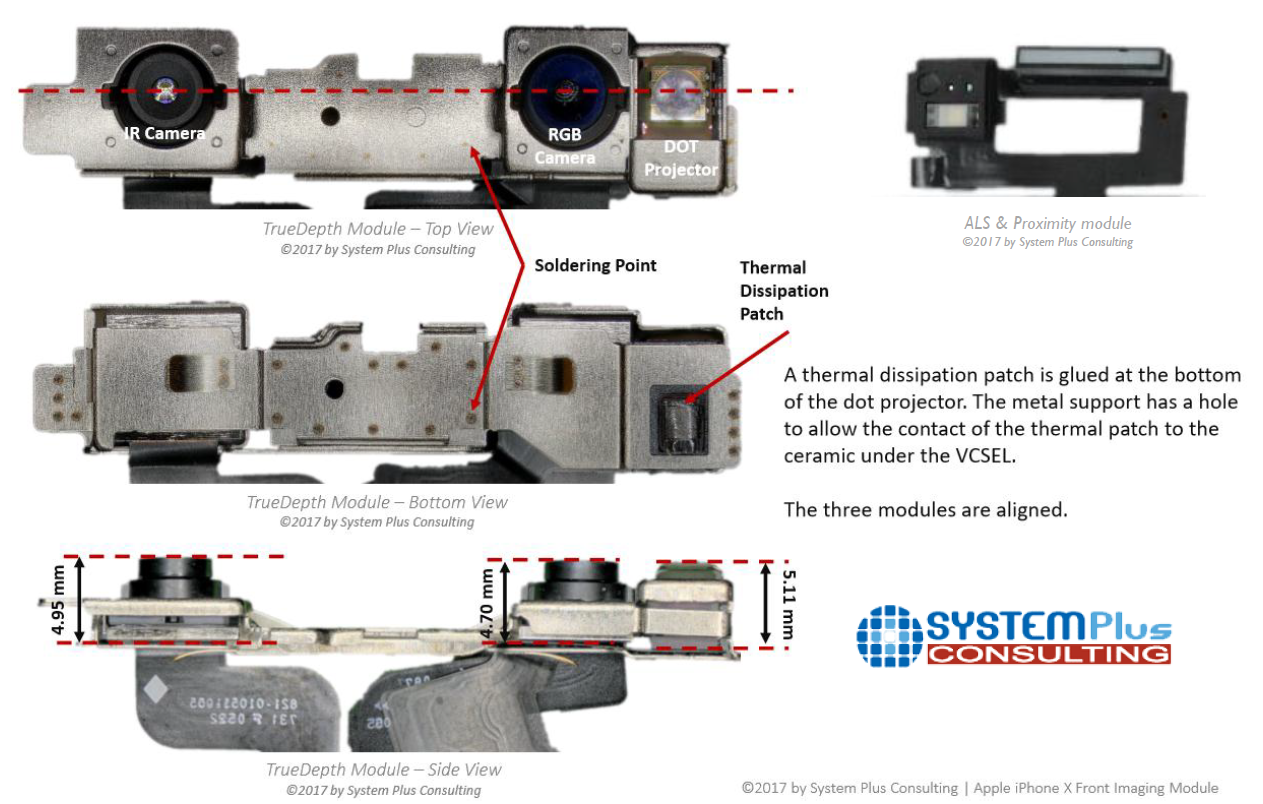
11-26: Samsung has practically secured new customers from the U.S. and China for its 7nm foundry business; BOE has advanced the official operation 10.5G LCD panel plant to Dec 2017 from the original schedule in 2018; etc.
Chipsets
In the following 4 years, from 2017 till 2020, there will about 63 new foundry factories built, and 26 of which will be located in China. This new foundry construction is also driving the whole supply chain recovery, and also the demand of autonomous equipments—by 2018 the global foundry fab equipment spending is estimated at USD46B. (Laoyaoba, China Times)
Samsung has practically secured new customers from the U.S. and China for its 7nm foundry business. Samsung is predicting that it will produce 40K~50K units per month from its EUV 7nm plant and current 17 line system semiconductor line when it secures these two new customers and adds Exynos supplies on top of amount of supplies for these customers. (TechNews, ET News)
Venture capitalists have invested USD113M in AI-focused chip startups in 2017—almost 3 times as much as in all of 2015, according to data from PitchBook. Graphcore has been one of the beneficiaries of this shift, recently adding USD50M in funding from Sequoia Capital. A number of other chip startups, including Mythic, Wave Computing, and Cerebras in the United States and DeePhi Tech and Cambricon in China, are also developing new chips tailored for AI applications. Cambricon has raised USD100M in an initial financing led by a Chinese government fund. (TechNews, Technology Review)
China’s semiconductor industry has been thriving since 2015 driven by the Chinese government’s supportive policy and industry fund, with the revenue expected to exceed RMB620B in 2018. According to TrendForce, in addition to assisting weak yet significant nodes in the industry chain, the National IC Investment Fund (“Big Fund”) will mainly focus on 3 key sectors in the coming years—memory, SiC/GaN compound semiconductor, and IC design. (Digitimes, TrendForce, press, TrendForce[cn])
Touch Display
AU Optronics (AUO) will adopt mini LED chips for backlighting in 2018, but the move will not affect its development of micro LED applications, which will take a long time to commercialize, according to company chairman and CEO Paul Peng. Micro LED will still be in the development stage in 2018-2019. (Digitimes, press, LTN, China Times)
Samsung will likely push for the Micro LED TV in the premium TV segment after releasing them in 2018. It was widely expected that Samsung would diversify the portfolio of its premium TV brands in 2018. Samsung’s QLED TV, which has an LED backlight applied with a sheet of quantum dots, is its top-of-the-line TV brand. (The Investor, Trusted Reviews, ZDNet, My Drivers)
Global competition in the large-sized flat panel sector is entering a new phase as China’s BOE Technology has announced plans to advance the official operation of its first, as well as the world’s first, 10.5G LCD panel plant to Dec 2017 from the original schedule in 2018. Other vendors that have joined the race to build 10.5G and 11G lines include China Star Optoelectronics Technology (CSOT), Foxconn Electronics, LG Electronics, HKC and China Electronics (CEC). (Digitimes, press, Sohu, People)
The US Patent & Trademark Office has published an Apple patent application for a foldable display—An electronic device may have a flexible portion that allows the device to be folded. The device may have a flexible display. The flexible display may have a bending region that allows the display to bend along a bend axis when the device is folded. (NDTV, 9to5Mac, Patently Apple, GizChina, Sohu)
Camera
EE Times has talked to Yole Développement, which completed a teardown of Apple iPhone X TrueDepth module in collaboration with its partner, System Plus Consulting. They deduced that silicon-on-insulator (SOI) wafers are being used in near-infrared (NIR) imaging sensors. They noted that SOI has played a key role in improving the sensitivity of NIR sensors, developed by STMicroelectronics, to meet Apple’s stringent demands. (EE Times, article, EE World)
Memory
Thanks to the gradual recovery of smartphone market and the advent of busy season, mobile DRAM demands picked up on 3Q17, boosting prices. Average price hike for mobile DRAM was less than 5% in 3Q17, mainly for narrowing regional price differences and slightly raising quotes for high-density models, as a result of the sequential revenue growth of 4.3%. SK Hynix racked up remarkable 30% growth, the highest among the top 3 suppliers, according to TrendForce. (TrendForce[cn], TrendForce, press)
TrendForce reports a growing demand for NAND Flash under the influence of traditional peak season and increasing demand for smartphones and SSD from servers and data centers. The gap between supply and demand is larger compared with 2Q17. However, the contract price of all product lines increased no more than 0%-6% in 3Q17 after a long period of continuous price increase, and the current price is approaching the highest level that OEM factories can afford. (TrendForce, press, TrendForce[cn])
China-based Fujian Jin Hua Integrated Circuit, which broke ground for a new DRAM fab in Jul 2017, has started equipment move-in for the facility. Jin Hua has UMC’s help in developing production technologies, with the first-generation 32nm node to be ready for volume production in 3Q18. Monthly production capacity at Jin Hua’s DRAM fab is estimated at 60K 12” wafers initially. (Digitimes, press, HQEW)
ChipMOS Technologies (Shanghai), of which Tsinghua Unigroup is a major stakeholder, is expected to secure backend orders for 3D NAND flash chips developed by Yangtze River Storage Technology (YMTC), according to Digitimes. ChipMOS Shanghai has already grabbed backend orders for NOR flash memory from Wuhan Xinxin Semiconductor Manufacturing (XMC), a wholly-owned subsidiary of YMTC. (Digitimes, press, China Flash Market)
Sensory
Research by Apple computer scientists on how self-driving cars can better spot cyclists and pedestrians while using fewer sensors has been posted online. The scientists proposed a new software approach called “VoxelNet” for helping computers detect three-dimensional objects. (TechNews, Reuters, Arvix)
LED epitaxial wafer and chip maker Epistar is working with Taiwanese panel makers in developing Mini LED and expects to have LCD panel with Mini LED backlit in 1H18. Also, it has extended production to wafers for processing VCSEL (vertical-cavity surface-emitting laser), with plans to expand production for the segment in 2018. (TechNews, Money DJ, Digitimes, press)
CrucialTec, a South Korea-based biometric solution developer, said that it has succeeded in developing the world’s first micro-sized thermometer sensor module that can be built into smartphones. The module is also touch-free, the subject does not have to come in direct contact with the sensor to measure temperature. (Android Authority, Korea Herald)
Battery
India’s move towards 100% electric vehicles (EVs) fleet by 2030 could create a USD300B domestic market for EV batteries, according to a report by government think tank Niti Aayog and Rocky Mountain Institute. The country will account for 2/5 of global EV battery demand by then and the shift to the clean energy fuel could require an investment of USD100B to set up 20 Giga factories to produce batteries. (TechNews, Economic Times, Business Standard)
Smartphones
KGI analyst Ming-Chi Kuo believes the change of Apple iPhone X delivery estimates down to 1~2 weeks is due to better than expected supply chain enhancements and parts availability. Foxconn is now pumping out 450K~550K iPhone X units per day, up from 50K~150K in the weeks leading up to launch. The analyst believes 4Q17 shipments could be 10%~20% higher than previously estimated. (Apple Insider, CN Beta)
According to IDC, in 3Q17 Xiaomi smartphone shipment in India has exceeded 9.2M units, which is about 23.5% market share, and becoming the top 1 smartphone vendor in the country. Xiaomi CEO Lei Jun indicates that a Chinese company to spend only 3 years to get to top 1 in the world’s 2nd largest smartphone market India, it proves that Xiaomi’s business model is really advanced. He also reveals that currently Xiaomi has already entered more than 60 countries, and in 13 of which already enter top 5. (Economic Times, Economic Times, My Drivers)
OPPO F5 Youth edition is launched in Philippines – 6” 2160× 1080 FHD+ display, MediaTek Helio P23 processor, rear 13MP + front 16MP cameras, 3GB RAM, 32GB storage, Android 7.1 (Color OS 3.2), Face Unlock, 3200mAh battery, PHP13,990 (USD275). (GSM Arena, OPPO, GizChina)
OPPO A79 is launched in China – 6” 2180×1080 FHD+ OLED display, MediaTek Helio P23 processor, rear 16MP + front 16MP cameras, 4GB RAM, 64GB storage, Android 7.1.1 (Color OS 3.2), 3000mAh battery, Face Unlock, CNY2399. (My Drivers, GSM Arena, OPPO, Android Crunch)
Vernee Active rugged smartphone is launched – 5.5” FHD 2.5D curved display, MediaTek Helio P25 processor, 6GB RAM, 128GB storage, IP68 certified, 4200mAh battery. (Android Headlines, Gizmo China, CN Beta)
Maze Alpha X is launched – 5.99” 2160×1080 FHD+ 2.5D curved display (supplied by LGD), MediaTek Helio P25 processor, rear 13MP / 16MP + front 8MP cameras, 6GB RAM, 64 / 128GB storage, 3900mAh battery, from USD209. (Gizmo China, Android Headlines, Maze Mobile, Phone Arena)
Internet of Things
Samsung is aggressively pushing artificial intelligence (AI) development. In fact, Samsung has been getting ready for AI. Samsung latest flagship SoC Exynos 9810 is using 2nd-gen 10nm process, with 3rd-gen self-developed CPU cores, supporting all modes of communication, and allegedly will be equipped with an AI SoC. (TechNews, Leiphone)
EMS provider Lite-On Technology has disclosed it has been developing IoT -based smart-home product lines, such as devices for smart lighting and smart energy management. Lite-On has shipped more than 3M lighting control modules for smart-home applications to clients in North America and will develop many models of smart lamps and lighting control modules in 2018-2019. (Digitimes, press, UDN, Money DJ, Laoyaoba)
SK Telecom, Hyundai Motor Company, Hanwha Asset Management, and Element AI will create a joint fund to invest in startups with innovative technology. Called the AI Alliance Fund, South Korea’s largest mobile carrier and the country’s biggest car maker, along with Hanwha, will put in USD45M to invest in startups working in AI, smart mobility, and fintech in Europe, Israel, and the US. (iTer Now, ZDNet, Korea IT Times, Business Wire, Sohu)
